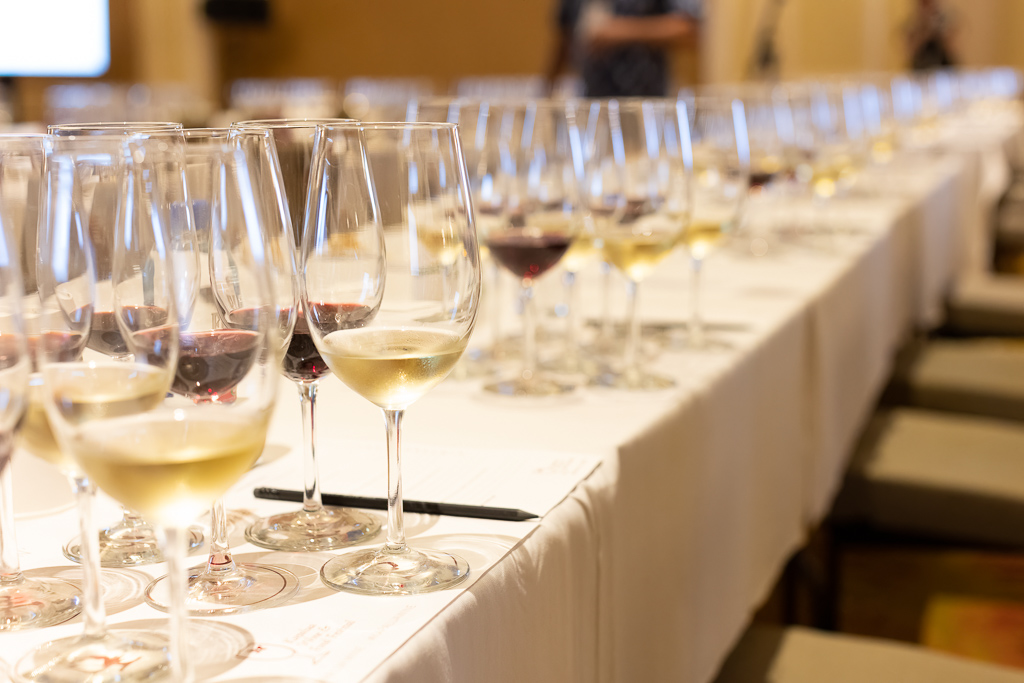Are you passionate about wine and looking to host a sophisticated and memorable event at a restaurant? Hosting a wine tasting event at a restaurant can elevate your evening into a truly special experience. As a sommelier, I understand the key components needed to create a successful wine tasting event that will impress your guests. From selecting the perfect wines to pairing them with delectable dishes, there are many intricacies involved in curating a remarkable tasting experience. In this blog, I will guide you through the essential steps and share insider tips on how to host a wine tasting event at a restaurant. Let’s uncork the secrets to creating an unforgettable wine affair!


Introduction: Setting the Stage for a Wine Tasting Event
Hosting a wine tasting event at a restaurant can be a delightful and educational experience for both novice and seasoned wine enthusiasts. Creating the right ambiance is key to ensuring your guests have a memorable time exploring different varietals and flavors. As a sommelier, you have the opportunity to elevate the event by curating a selection of fine wines and guiding participants through a sensory journey that engages their palates and imaginations.
Choosing the Venue
When selecting a restaurant as the venue for your wine tasting event, consider the layout and atmosphere that will enhance the tasting experience. Look for a space with ample natural light or soft, ambient lighting to create a relaxed and inviting setting. Ensure there are enough tables for wine displays and comfortable seating for guests to linger and savor each sip.
Creating the Tasting Menu
Develop a tasting menu that showcases a variety of wines, including different grape varieties, regions, and styles. Offer a range of tasting portions, from light-bodied whites to full-bodied reds, to cater to diverse preferences. Provide tasting notes and information about each wine to help participants understand the unique characteristics of each selection.

Choosing the Perfect Restaurant Venue
When hosting a wine tasting event at a restaurant, selecting the right venue plays a crucial role in the overall experience. Consider how to host a wine tasting event at a restaurant by focusing on the ambiance, space, and amenities offered.
Location & Accessibility
Choose a venue that is easily accessible to your guests to ensure a smooth arrival. Opt for a central location that is convenient for everyone.
Ambiance & Decor
Select a restaurant with a charming atmosphere that complements the wine-tasting experience. Look for cozy lighting and elegant decor to set the perfect mood.
- Lighting: Ensure the venue offers adjustable lighting to create the ideal ambiance for wine tasting.
- Decor: Consider the restaurant’s decor style and ensure it aligns with the theme of your event.
Space & Capacity
Make sure the restaurant venue has enough space to accommodate your guests comfortably. Consider the seating arrangement and layout to facilitate interaction among attendees.
Curating the Wine Selection for the Tasting
When hosting a wine-tasting event at a restaurant, curating the wine selection is crucial to ensure a memorable experience for your guests. Start by considering the theme or focus of the tasting – whether it’s by region, grape varietal, or style. Pairing wines with complementary foods can also enhance the tasting experience and delight the palate.
Research and Selection
Begin by researching the latest wine trends and popular varietals in the given year of your event. Keep in mind the preferences of your target audience and select a diverse range of wines to cater to different tastes.
- Include a mix of red, white, and sparkling wines
- Consider including wines from both well-known and up-and-coming wineries
Consult with a Sommelier
For expert guidance and recommendations, consulting with a sommelier can elevate the quality of your wine selection and help you choose wines that harmonize well with the tasting menu.
:max_bytes(150000):strip_icc()/Wine-Guide-Cabernet-Sauvignon-FT-BLOG0622-2000-6b414113ef0449178e4ee5bf69ceeb5c.jpg)
Designing the Tasting Experience: From Glassware to Ambiance
When hosting a wine tasting event at a restaurant, attention to detail is key in creating a memorable experience for your guests. From the selection of glassware to the ambiance of the setting, every element plays a crucial role in enhancing the overall tasting experience.
Choosing the Right Glassware
Investing in quality wine glasses can significantly elevate the tasting experience. Opt for glasses that have a thin rim and a wide bowl to allow the aromas of the wine to fully develop. The shape of the glass can also impact how the wine lands on different taste receptors, enhancing the nuances of the wine.
Crafting the Ambiance
Creating the right ambiance sets the tone for the tasting event. Consider factors such as lighting, music, and decor to enhance the overall mood. Soft, ambient lighting can create a cozy and sophisticated atmosphere, while subtle background music can add to the sensory experience.

Pairing Wine with Food: Elevating the Culinary Experience
Pairing wine with food can truly elevate the dining experience, adding a new dimension to the flavors and enhancing the overall enjoyment of a meal. When hosting a wine tasting event at a restaurant, it’s essential to understand how different wines complement various dishes, allowing guests to savor each sip and bite to the fullest.
The Art of Wine and Food Pairing
Understanding the basic principles of wine and food pairing is crucial. Consider the flavor profiles of both the wine and the dish – whether it’s a light, crisp white wine with seafood or a robust red with steak, finding the perfect balance is key. Taking the time to curate a well-thought-out menu can greatly enhance the tasting experience.
Tips for Successful Pairing
When selecting wines for your tasting menu, consider the regional cuisines and ingredients that pair well with specific wine varietals. Exploring new combinations can surprise and delight your guests, offering them a unique culinary journey through each glass.
- Experiment with contrasting flavors to create a dynamic tasting experience
- Balance the intensity of the wine with the richness of the dish
- Consider the texture and weight of both the wine and food
Guiding Guests Through the Tasting: Tips from a Sommelier
As a sommelier, guiding guests through a wine tasting event at a restaurant is both an art and a science. To ensure a memorable experience, it’s essential to pay attention to detail and provide valuable insights to participants.
Setting the Stage
Set up a designated tasting area with ample space for guests to move around comfortably. Use neutral tablecloths and provide clean glassware for each wine being tasted.
Understanding the Basics
Start the event by explaining the fundamentals of wine tasting, such as swirl, sniff, sip, and savor. Encourage guests to vocalize their thoughts and opinions.
Highlighting Wine Profiles
Introduce different wine varietals while discussing their unique characteristics. Offer comparisons and emphasize the importance of terroir in wine production.
Frequently Asked Questions
- What are some key steps to host a successful wine-tasting event at a restaurant?
- Some key steps to host a successful wine tasting event at a restaurant include selecting the wines, creating a tasting order, preparing tasting notes, setting up the tasting area, and providing accompaniments such as cheese and crackers.
- How do you select wines for a wine tasting event?
- When selecting wines for a wine tasting event, consider choosing a variety of wines from different regions, grape varietals, and styles. It’s also important to think about the preferences of your guests and any specific themes you want to explore.
- What is the ideal tasting order for a wine tasting event?
- The ideal tasting order for a wine tasting event typically starts with lighter-bodied white wines, progresses to fuller-bodied whites, then moves on to lighter-bodied reds, and finishes with fuller-bodied reds. Dessert wines can be served at the end if desired.
- How can you enhance the tasting experience for guests at a wine tasting event?
- To enhance the tasting experience for guests at a wine tasting event, consider providing tasting notes or information about each wine, encouraging guests to share their thoughts and observations, and offering food pairings that complement the wines being tasted.
- What are some common mistakes to avoid when hosting a wine tasting event at a restaurant?
- Some common mistakes to avoid when hosting a wine tasting event at a restaurant include not providing enough glassware or spittoons, serving wines at the wrong temperature, overcrowding the tasting area, and not considering the dietary restrictions of your guests.
Final Thoughts
In conclusion, hosting a wine-tasting event at a restaurant can be a delightful and sophisticated experience when done right. By following the sommelier’s guide shared in this blog, you can elevate your event to new heights. Remember to curate a diverse selection of wines, provide informative tasting notes, and create a welcoming ambiance for your guests. Pay attention to details such as glassware and food pairings to enhance the overall tasting experience. With proper planning and execution, your wine-tasting event at a restaurant is sure to be a memorable and enjoyable occasion for all attendees.